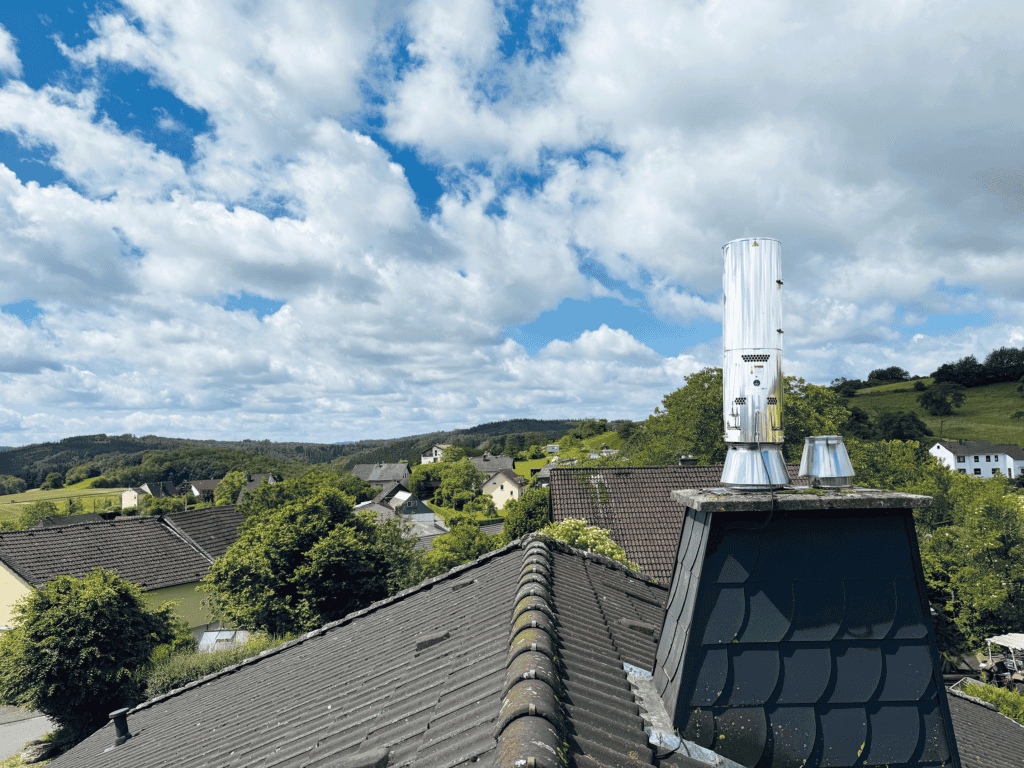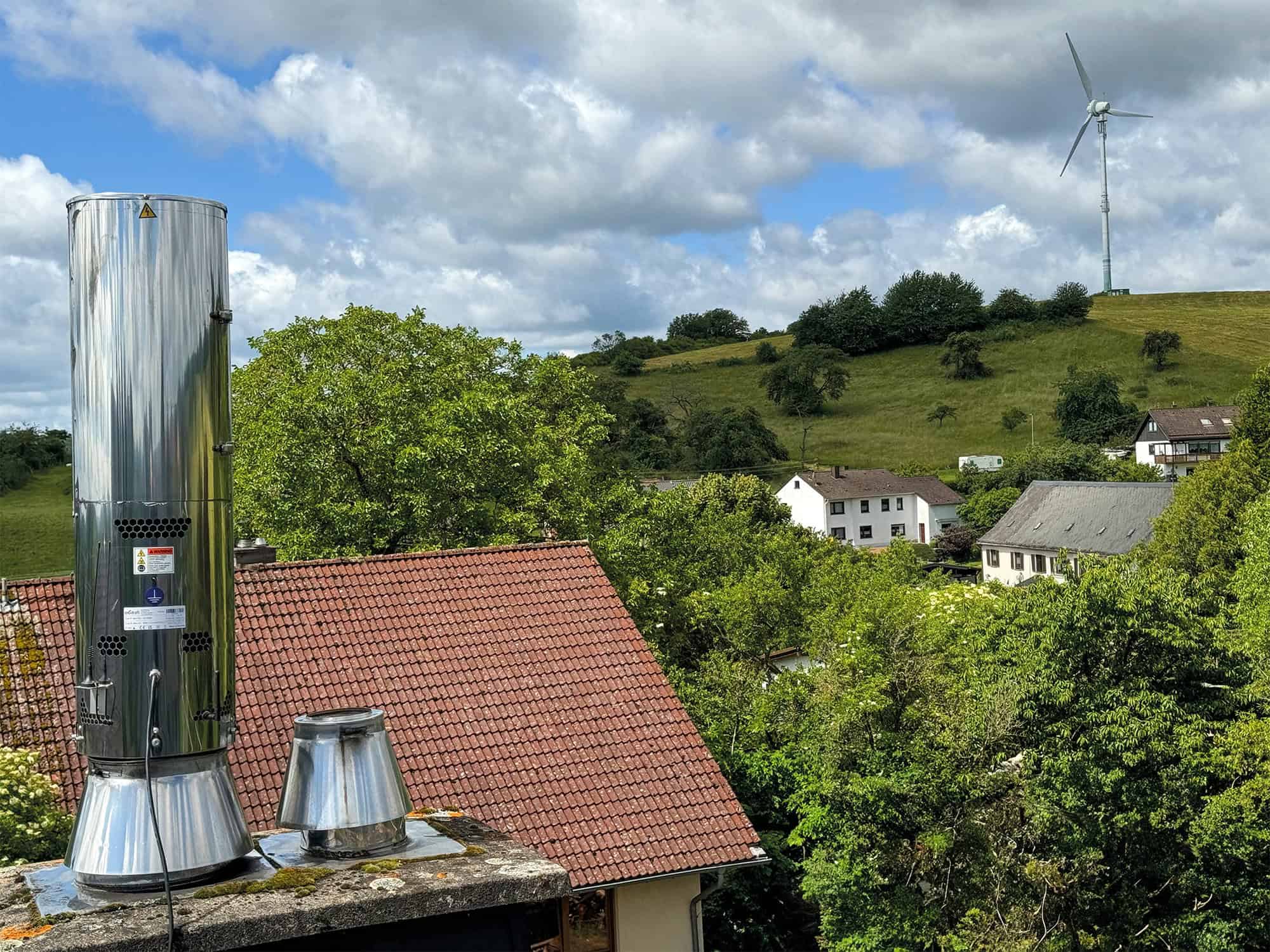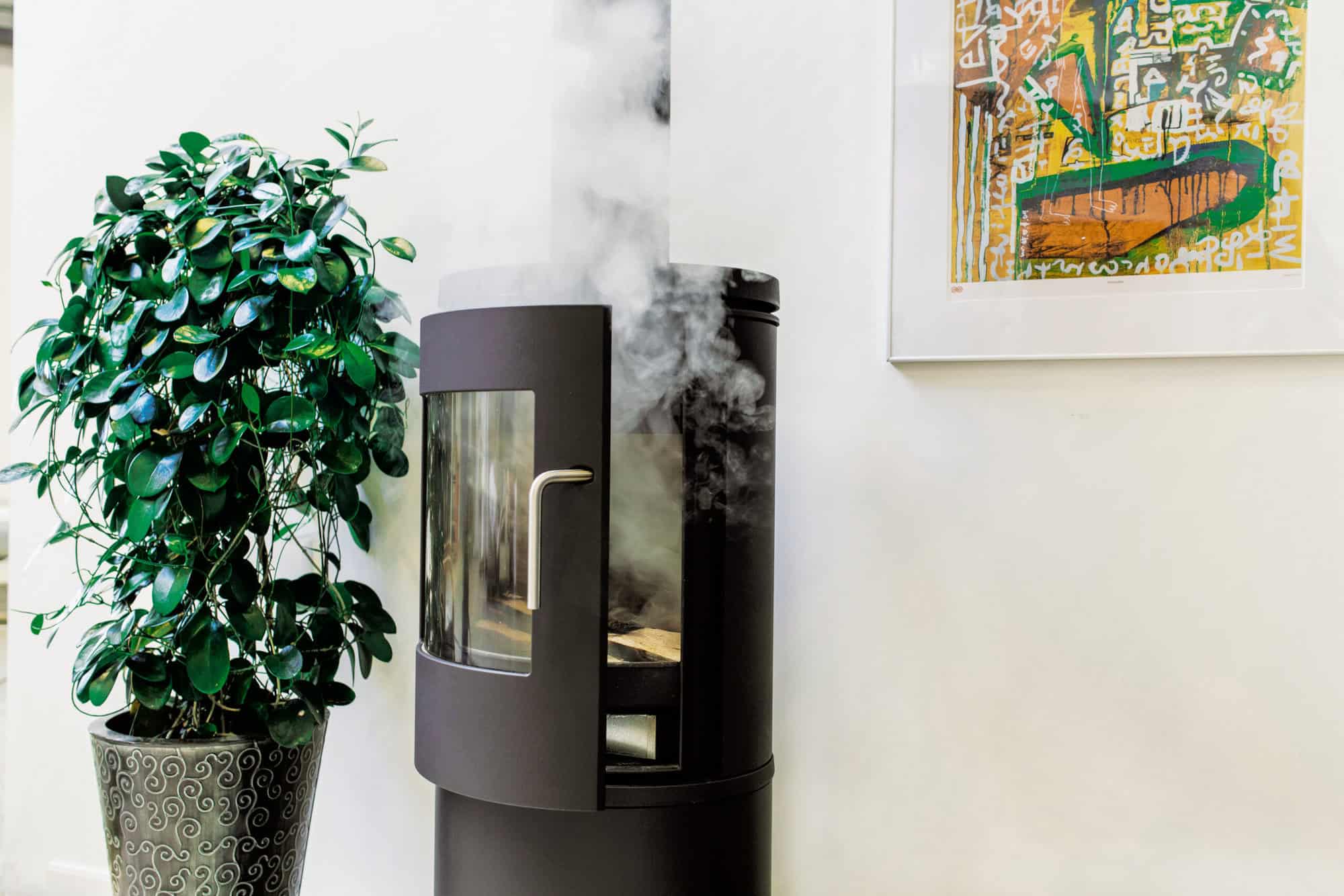Article
26. juni 2025 · 7 min
Is Wood Smoke Cancerous?
Is wood smoke a cancer risk? Discover the hidden dangers of fine particles and carcinogens in wood smoke — and learn how chimney fans, filters, and proper burning techniques can reduce health risks and improve air quality

Wood-burning stoves and fireplaces have been used for centuries to provide heat and comfort. However, in recent years, concerns have grown about the health risks associated with wood smoke, particularly its potential link to cancer and respiratory diseases. While wood is often seen as a natural and renewable fuel, its smoke contains fine particles and harmful chemicals that can affect air quality and human health.
As awareness of air pollution and indoor air quality increases, many homeowners are questioning whether wood smoke is a serious health threat and if it could contribute to long-term diseases like lung cancer. In this article, we explore what makes wood smoke harmful, its link to cancer, and how proper ventilation and filtration can help reduce exposure.
Why Is Wood Smoke a Health Concern?
For many, the smell of a wood-burning stove is associated with warmth and comfort. However, behind the familiar scent lies a mixture of fine particles and chemical compounds that can pose significant health risks. Unlike the visible smoke that dissipates into the air, the microscopic pollutants in wood smoke can linger and be inhaled deep into the lungs.
One of the primary concerns is particulate matter (PM2.5 and PM0.1), which consists of tiny airborne particles small enough to penetrate lung tissue and even enter the bloodstream. These particles can cause inflammation, oxidative stress, and long-term damage to respiratory and cardiovascular health. Studies have shown that prolonged exposure to wood smoke can lead to chronic lung conditions, reduced lung function, and an increased risk of developing certain cancers.
Beyond fine particles, wood smoke also contains polycyclic aromatic hydrocarbons (PAHs), dioxins, and volatile organic compounds (VOCs), many of which are known carcinogens. When wood is burned inefficiently or at lower temperatures, these toxic compounds are released in higher concentrations, increasing health risks for those exposed.
While wood smoke is an issue in both indoor and outdoor environments, the greatest risk occurs in poorly ventilated homes where emissions accumulate. This makes proper combustion, ventilation, and filtration critical in reducing exposure to harmful pollutants.
Does Wood Smoke Contain Carcinogens?
Scientific research has confirmed that wood smoke contains known carcinogens, much like cigarette smoke and other sources of air pollution. When wood burns, it releases a complex mixture of gases and particles, many of which have been classified as hazardous by the World Health Organization (WHO) and environmental agencies worldwide.
One of the most concerning components of wood smoke is polycyclic aromatic hydrocarbons (PAHs). These compounds are formed during incomplete combustion and have been directly linked to lung cancer and other respiratory diseases. PAHs can bind to fine particles, making them easily inhaled and absorbed into the lungs, where they can cause DNA damage over time.
In addition to PAHs, wood smoke also contains:
- Dioxins and furans, highly toxic compounds associated with cancer and immune system damage.
- Benzene, a volatile organic compound (VOC) that is a well-documented carcinogen.
- Formaldehyde, which can irritate the lungs and has been linked to respiratory illnesses and cancer.
While no single exposure to wood smoke is likely to cause immediate harm, long-term and repeated exposure significantly increases health risks. People who live in homes with frequent wood burning or in areas with high levels of wood smoke pollution face an elevated risk of lung disease and cancer, particularly if proper ventilation and emission controls are not in place.
Long-Term Health Risks of Wood Smoke Exposure
The long-term effects of wood smoke exposure go beyond just irritation or short-term respiratory issues. Numerous epidemiological studies have linked prolonged exposure to wood smoke with chronic respiratory diseases, cardiovascular problems, and an increased risk of lung cancer.
Respiratory Diseases and Lung Damage
Wood smoke can cause inflammation of the airways, leading to conditions such as chronic bronchitis and asthma. Repeated exposure to fine particulate matter (PM2.5) has been shown to reduce lung function over time, making individuals more vulnerable to respiratory infections and long-term lung damage.
Increased Risk of Lung Cancer
Research has shown a strong correlation between long-term wood smoke exposure and the development of lung cancer. In some regions where wood burning is the primary source of heating, lung cancer rates among non-smokers are significantly higher due to continuous exposure to carcinogenic compounds in wood smoke.
Cardiovascular Health Risks
Fine and ultrafine particles from wood smoke don’t just remain in the lungs; they can also enter the bloodstream, leading to systemic inflammation and arterial damage. This increases the risk of heart attacks, strokes, and other cardiovascular diseases, especially in individuals with pre-existing conditions.
Given these risks, reducing exposure to wood smoke—both indoors and outdoors—is essential for protecting long-term health. Fortunately, modern ventilation, filtration, and combustion technology can significantly reduce emissions and improve air quality.

How to Reduce Exposure to Harmful Emissions
While wood smoke presents serious health risks, there are several effective ways to minimise exposure and create a safer indoor environment.
Installing a Particle Filter to Capture Harmful Emissions
Even with clean combustion, wood smoke still releases fine and ultrafine particles that can be harmful to health. A particle filter is one of the most effective ways to reduce pollution by:
- Capturing 95% of fine and ultrafine harmful particles, significantly improving air quality.
- Helping homeowners meet stricter environmental regulations in urban areas.
- Protecting vulnerable individuals, such as children, the elderly, and those with respiratory conditions.
Optimising Combustion with Proper Wood Selection
The type of wood you burn plays a significant role in how much smoke and pollution is produced. To reduce emissions:
- Use dry, seasoned hardwood with a moisture content below 20%.
- Avoid burning treated or painted wood, which releases toxic chemicals.
- Burn wood at higher temperatures to ensure more complete combustion and fewer pollutants.
Improving Chimney Draft for Cleaner Burning
Poor airflow in a wood burner can cause incomplete combustion, leading to higher emissions and smoke leakage. A chimney fan can:
- Stabilise airflow, ensuring optimal oxygen supply for cleaner burning.
- Prevent smoke from entering the room, improving indoor air quality.
- Reduce creosote buildup, lowering maintenance needs and fire hazards.
By combining filtration, proper fuel selection, and improved ventilation, homeowners can greatly reduce exposure to harmful wood smoke emissions while maintaining the benefits of a wood-burning stove.
Can Wood Burning Be Made Safer?
Wood smoke contains known carcinogens, and long-term exposure is linked to respiratory diseases, cardiovascular issues, and an increased risk of lung cancer. However, by implementing modern combustion and filtration technologies, homeowners can significantly reduce the risks associated with wood burning.
To burn wood more safely:
- Use clean, dry hardwood to minimise emissions.
- Improve chimney draft with a chimney fan for better airflow.
- Install a particle filter to capture harmful fine particles.
By making smart upgrades and using proper burning techniques, it is possible to enjoy the benefits of wood heating while reducing health risks and improving air quality. With the right approach, wood-burning stoves can be a viable and cleaner heating solution, even in a world with growing concerns about air pollution and health.

exodraft














